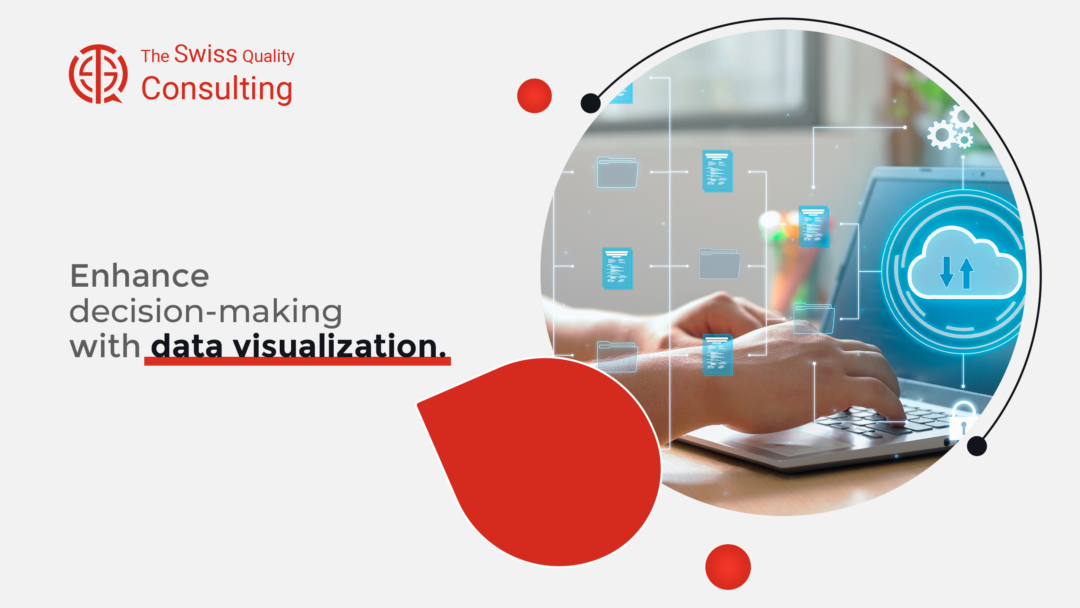Unlocking the Power of Data Through Effective Visualization Techniques
In today’s data-driven business landscape, the ability to effectively interpret and utilize data is paramount. The quote “Enhance decision-making with data visualization” aptly encapsulates a growing trend among business executives, mid-level managers, and entrepreneurs. Data visualization is not just a tool but a strategic asset that can significantly improve decision-making processes in businesses. This article explores how data visualization, when effectively implemented, can transform complex data into actionable insights, driving business success.
The Impact of Data Visualization on Business Decision-Making
Data visualization stands as a transformative approach in business analytics, transcending beyond mere representation to a comprehensive tool for strategic decision-making. It is an art form that converts raw data into graphical or pictorial formats, such as charts, graphs, and heat maps, making complex data sets more accessible and understandable. This enhanced accessibility is crucial for decision-makers who rely on data to guide their strategies but may not have specialized analytical training.
The power of data visualization lies in its ability to simplify the comprehension of large volumes of data. When data is presented visually, it becomes easier to identify patterns, anomalies, and trends that might be overlooked in traditional, text-heavy reports. For instance, a well-designed chart can highlight sales patterns over time or show customer behavior trends, providing clear insights that could inform marketing strategies or product development.
Another significant advantage of data visualization is the speed at which information can be processed. In today’s fast-paced business environment, the ability to quickly understand and react to information is critical. Visual data representations allow decision-makers to grasp complex concepts rapidly and respond to market changes more swiftly. This rapid comprehension is vital for maintaining a competitive edge in industries where conditions can change quickly.
Moreover, data visualization facilitates more effective communication across different departments within an organization. It creates a common visual language that can be understood by all, regardless of their expertise in data analysis. This universal understanding is essential for aligning teams around shared goals and strategies, ensuring that everyone is working from the same set of information.
Additionally, data visualization tools can be used to forecast future trends and scenarios, allowing businesses to plan proactively. By analyzing historical data through visual means, companies can identify potential opportunities and risks, helping them to strategize more effectively for the future. This foresight is invaluable for long-term planning and can help businesses avoid pitfalls and capitalize on emerging trends.
In summary, data visualization is much more than a simple translation of data into a visual format; it is a critical business tool that enhances understanding, accelerates decision-making, and improves communication. By leveraging the capabilities of data visualization, businesses can unlock the full potential of their data, making more informed decisions that drive success and growth.
Integrating Generative Artificial Intelligence in Data Visualization
The integration of Generative Artificial Intelligence (AI) in data visualization opens new frontiers in how businesses interpret data. AI algorithms can automate the process of data analysis, uncovering patterns and correlations that may not be immediately apparent. This automation not only speeds up the decision-making process but also ensures a higher degree of accuracy in the insights generated. Generative AI can predict future trends based on historical data, providing businesses with a predictive edge in their strategy formulation.
Effective Communication Through Visual Data Insights
Effective communication is essential in the dissemination of data insights across an organization. Data visualization aids in this by providing a universal language that can be understood across different departments, regardless of individuals’ technical expertise. This common visual language ensures that key insights are communicated effectively, enabling all team members to participate in data-driven decision-making processes.
Executive Coaching for Data-Driven Leadership
Executive coaching services play a vital role in equipping leaders with the skills needed to interpret and use data visualizations effectively. Through coaching, executives can learn how to ask the right questions of their data, interpret visual insights correctly, and make decisions based on a comprehensive understanding of their business analytics. This skill is crucial in a world where data is abundant, but the ability to derive meaningful insights from it is what sets successful leaders apart.
Project Management and Data Visualization
In project management, data visualization tools are invaluable for tracking progress, identifying potential risks, and allocating resources efficiently. Project managers can use these tools to present complex project data in a more digestible format, facilitating better project oversight and stakeholder communication. This leads to more efficient project execution and a greater likelihood of meeting project objectives.
Conclusion Enhance decision-making with data visualization
In conclusion, the phrase “Enhance decision-making with data visualization” highlights a crucial strategy for modern businesses. By leveraging data visualization, businesses can transform raw data into a strategic asset, enhancing decision-making, communication, and overall business efficiency. As the business world becomes increasingly data-centric, the ability to visualize and interpret this data will become a key differentiator in business success.
#DataVisualization, #BusinessIntelligence, #DecisionMaking, #AI, #ProjectManagement









